
Hands up if you have blinds in your home. And keep your hands up if dusting them is the bane of your life? Well, welcome to the club. Although I know I should keep on top of cleaning my blinds, I’ll be the first to admit that I don’t give them as much attention as I should.
Yep, cleaning blinds is one of my most hated cleaning tasks. In my case, I have plantation shutters on five of the windows in my small Victorian terraced house. And while that may not seem like a lot, that equates to 160 individual slats that need to be dusted regularly - top AND bottom. But no matter how long I (unwillingly) take to dust them, they just always look dusty.
But in an effort to streamline my cleaning schedule (and actually clean my blinds for once), I set out to test three blind cleaning tools in the hopes that at least one of them would leave my shutters dust-free once and for all - and I definitely found it. And it’s not a traditional tool for cleaning blinds, either.
The Amazon test products
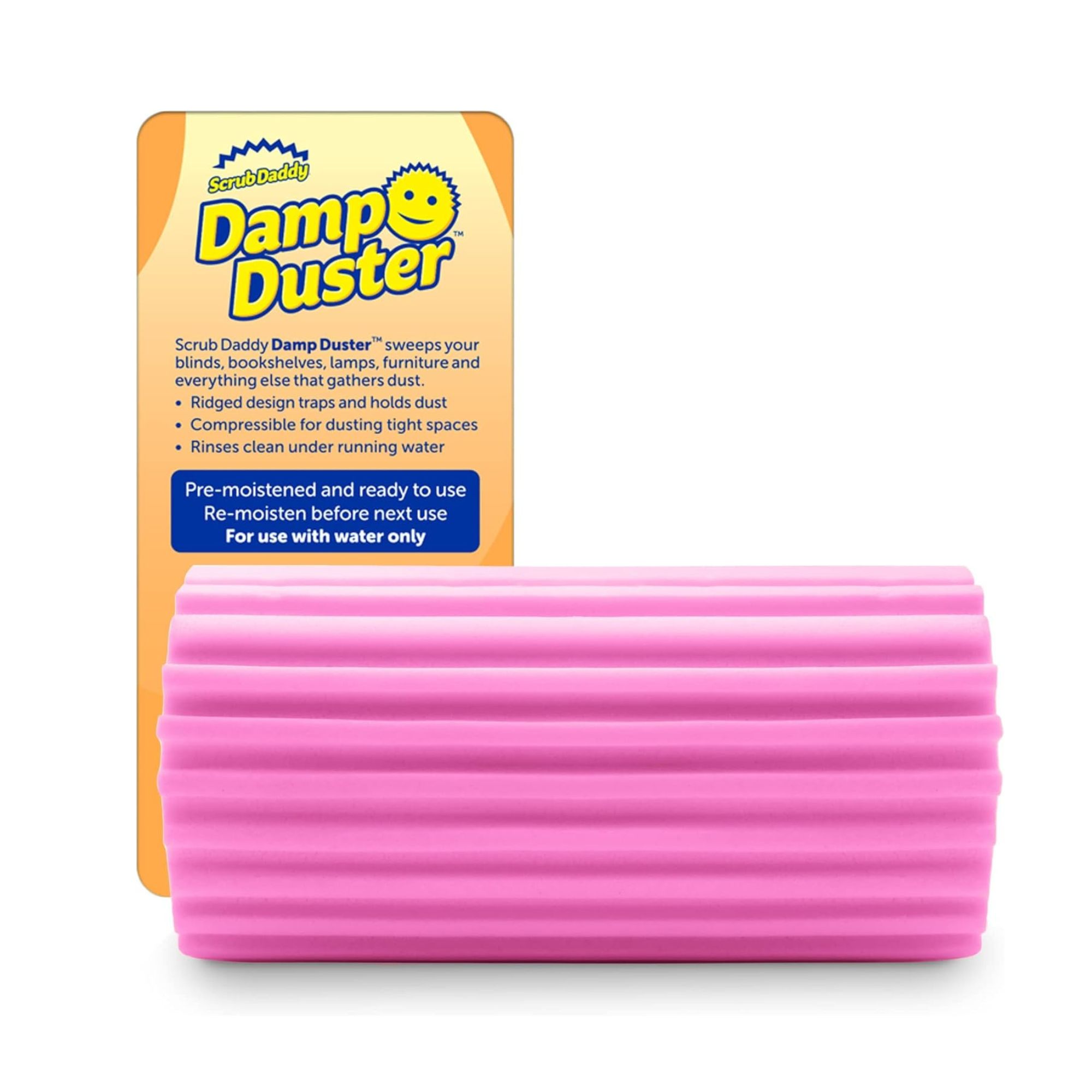
This rippled cleaning sponge must be moistened before each use to soften the foam and has been designed to collect and trap dust in one quick wipe. It can be used on blinds, vents, baseboards, railings, mirrors, and more. Then, all you have to do is wash it under the tap after use.
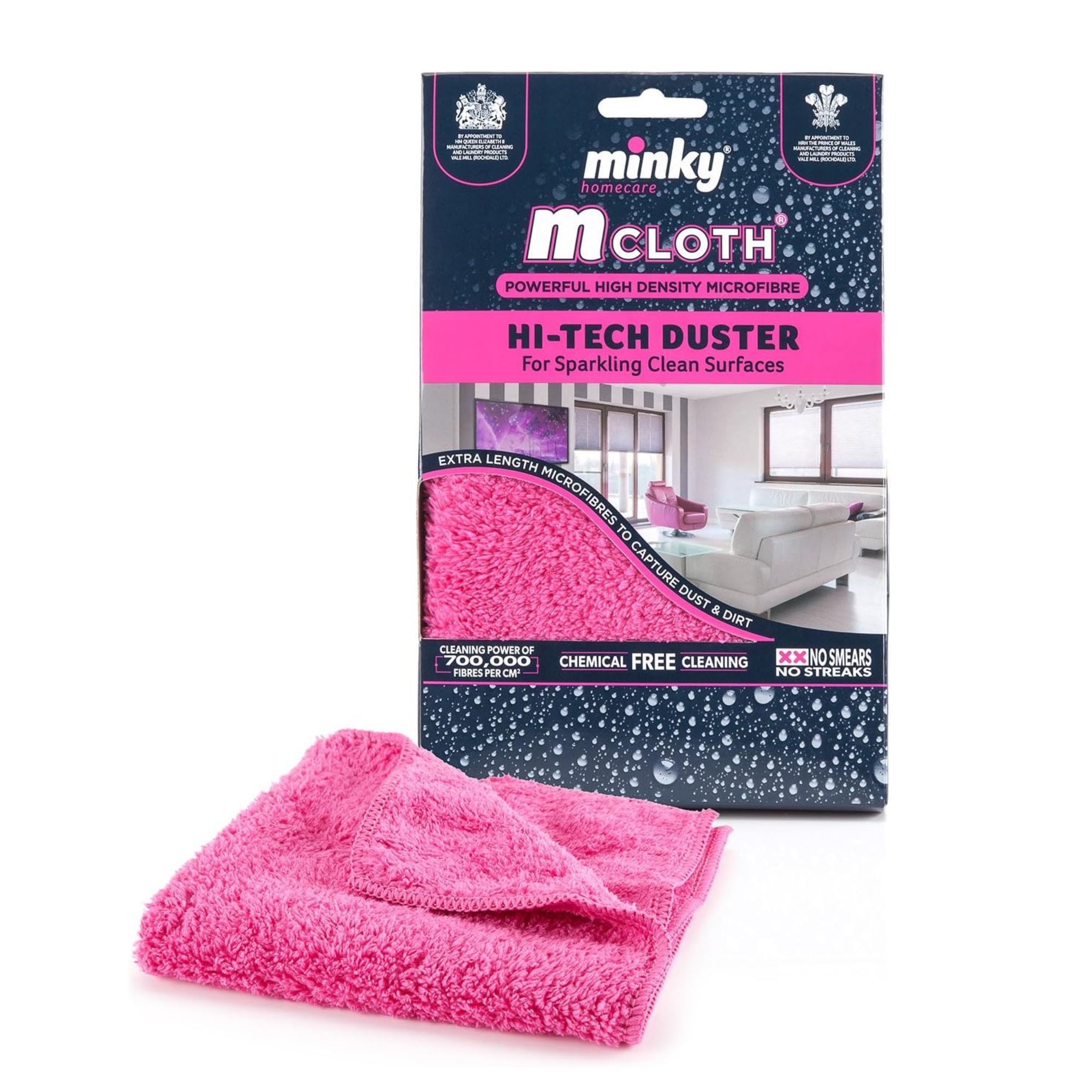
Minky Cloths are considered to be some of the best on the market, and this one has extra long microfibres to capture dust and dirt. In fact, the super soft, extra-length microfibres have been designed to attract and trap even the smallest dust particles.
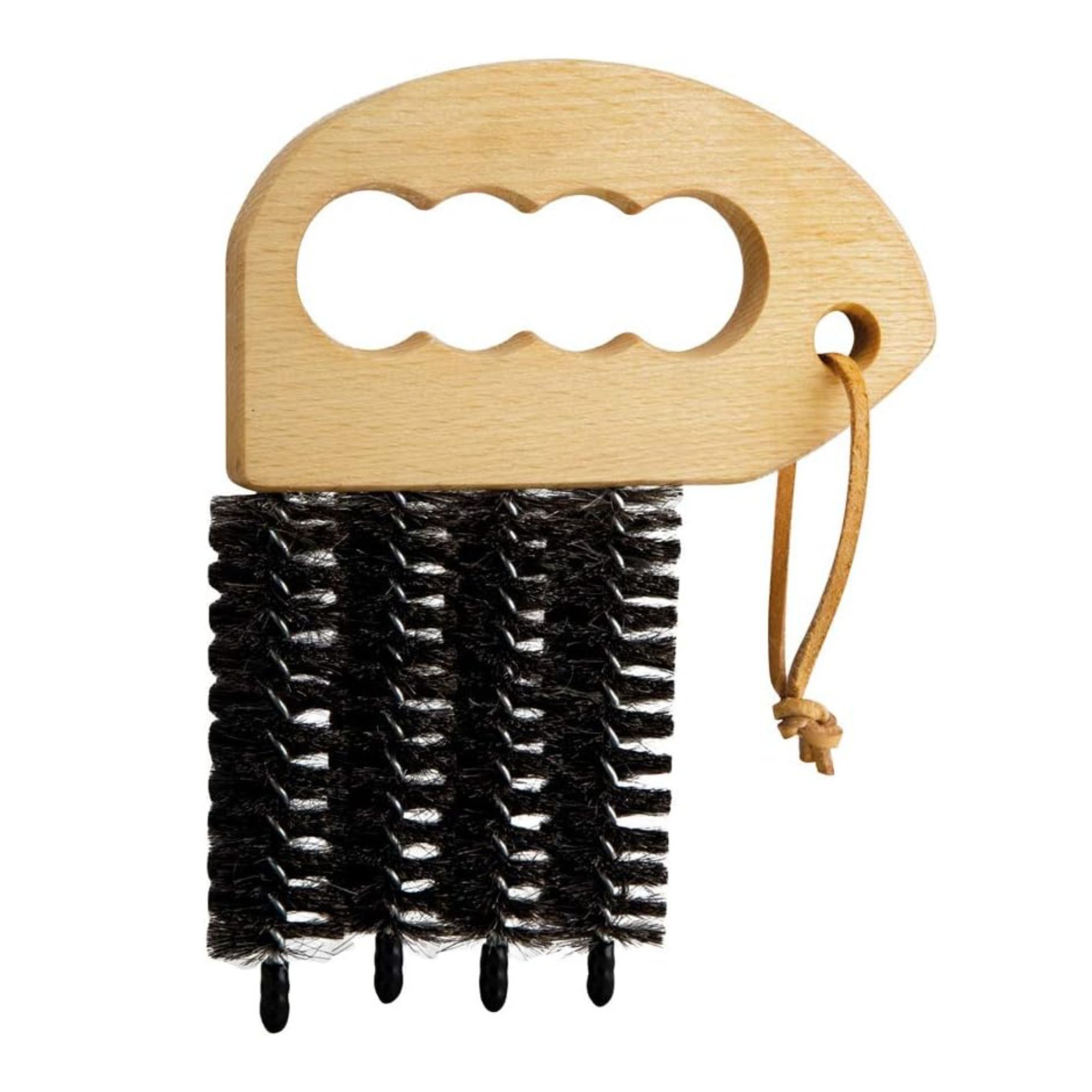
This specialist cleaning tool has a beech handle and four pronged goat hair bristles and it even comes with a hanging loop for easy storage. Although this is the one I ordered, the brush that arrived was a slightly different shape. However, this was the only difference.
Testing the Minky Hi-Tech Duster
When discussing the boring plight of blind and shutter dusting with Ideal Home’s Editor-In-Chief, Heather Young, we asked each other, ‘Do you actually need a specialist blind cleaner to clean your blinds?’ To answer this question, I started by testing a product that most people already have at their disposal: a trusty duster.
In the past, I’ve used an old duster to clean my blinds, but it just hasn’t really cut the mustard. For the most part, it just seemed to spread the dust across the surface rather than picking it up. That’s why I was excited to give a fresh, new Minky Hi-Tech Duster a run for its money. And while it’s not technically a specific duster for blinds, it’s still considered the crème de la crème of dusters.
To test out this blind cleaning tool, I decided to just get started. And while I’m sure there’s a nifty technique to dusting blinds or shutters with a duster, I don’t seem to have mastered it. During my test, I simply clamped the duster and the slat in my hand like a puppet and wiped it across.
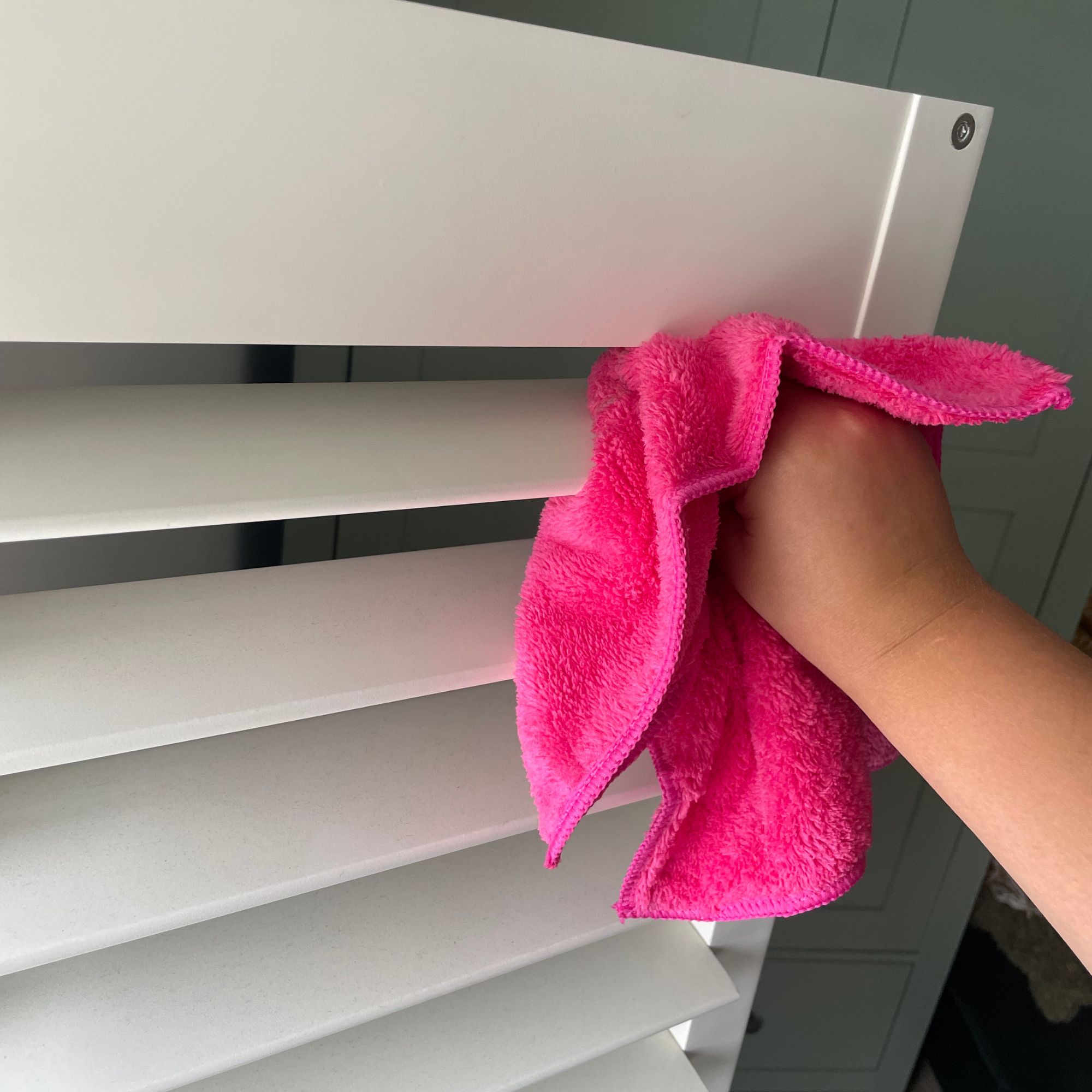
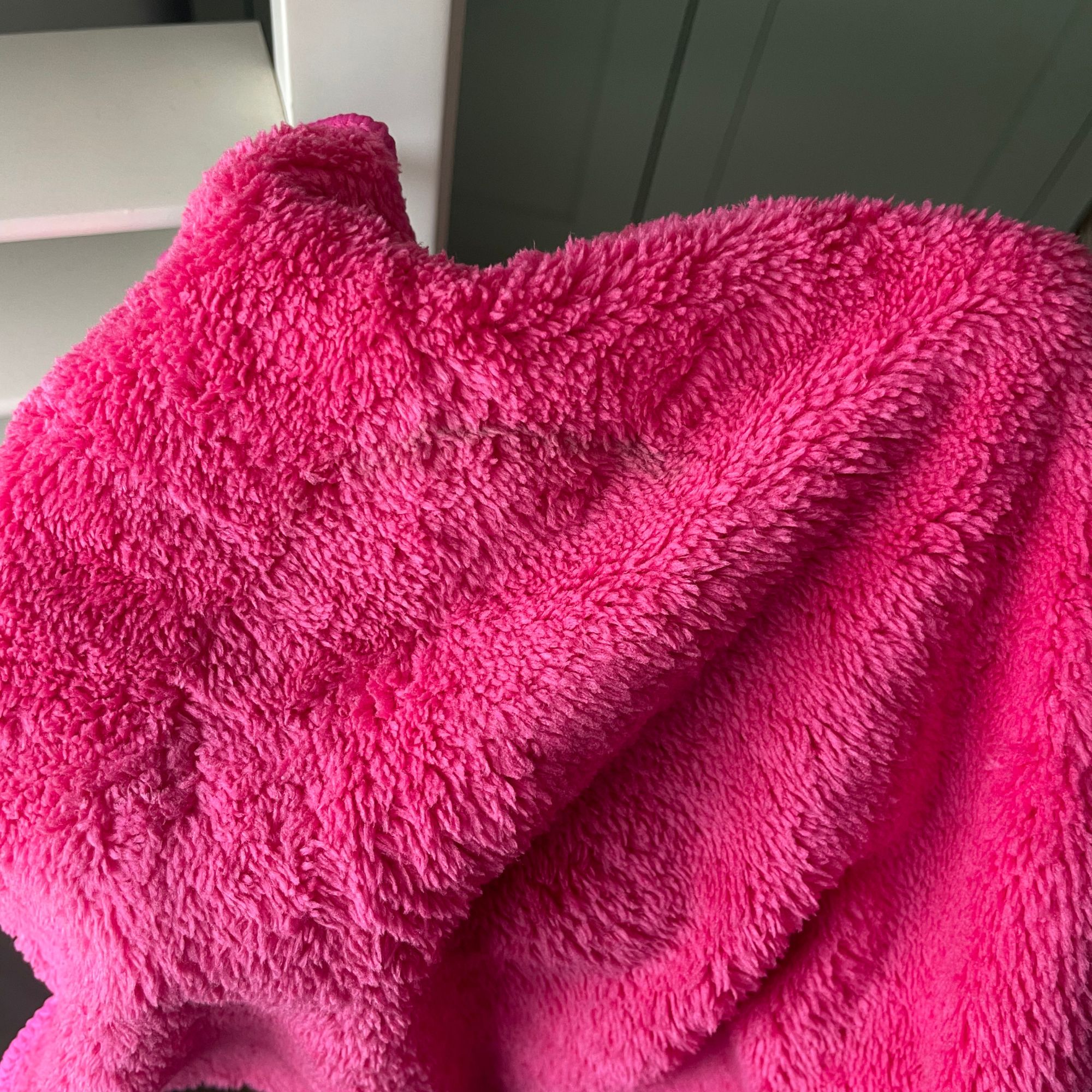
Being able to dust both the topside and the underside of each slat should have allowed me to cut my cleaning time in half. However, I have freakishly small hands, so I couldn’t grab the whole slat - which measures at 8cm deep - in one. This meant I had to dust a few sections again, but this wouldn’t be a problem for people with bigger hands than me - or those with thinner blinds or shutters.
Overall, the duster picked up the dust fairly well, and when I'd finished, I could visibly see some dust on the product. If I were to be nit-picky, though, I would say that it didn’t pick up all of the dust.
Another criticism is that the whole process was still very time-consuming. As dusters go, it did what I needed it to do - but I was looking forward to trying something a little more specialist in the hopes that it would speed up the process.
Testing the Eddingtons Valet Blind And Shutter Brush
Over the years, Eddingtons has made a name for itself by offering quirky and innovative home tools. So, I was excited to test the brand’s Valet Blind And Shutter Brush - especially as Heather told me that it was the product she used. Plus, it’s designed to be a dedicated blind cleaning brush, so I had high hopes that it would get the job done quickly and efficiently.
As someone who loves nifty gadgets designed to solve very specific problems (my new Lakeland mini countertop vacuum is my new favourite buy) I was immediately impressed. The four goat’s hair brushes were incredibly soft, and the tool itself was incredibly light, so I didn't have to force it over the slats.
However, I was a little disappointed to see that it was too small to dust two slats at once - a feature that would have been well worth the higher price tag. This is because there’s a 6cm gap between each slat of my blinds, which doesn’t quite suit the product itself.
This meant that the bottom two brushes were essentially useless while dusting my blinds. Nevertheless, this shouldn’t be a problem for those looking to clean their Venetian blinds, which are smaller than my plantation shutters and typically have a gap of between 1.6cm to 5cm between them.
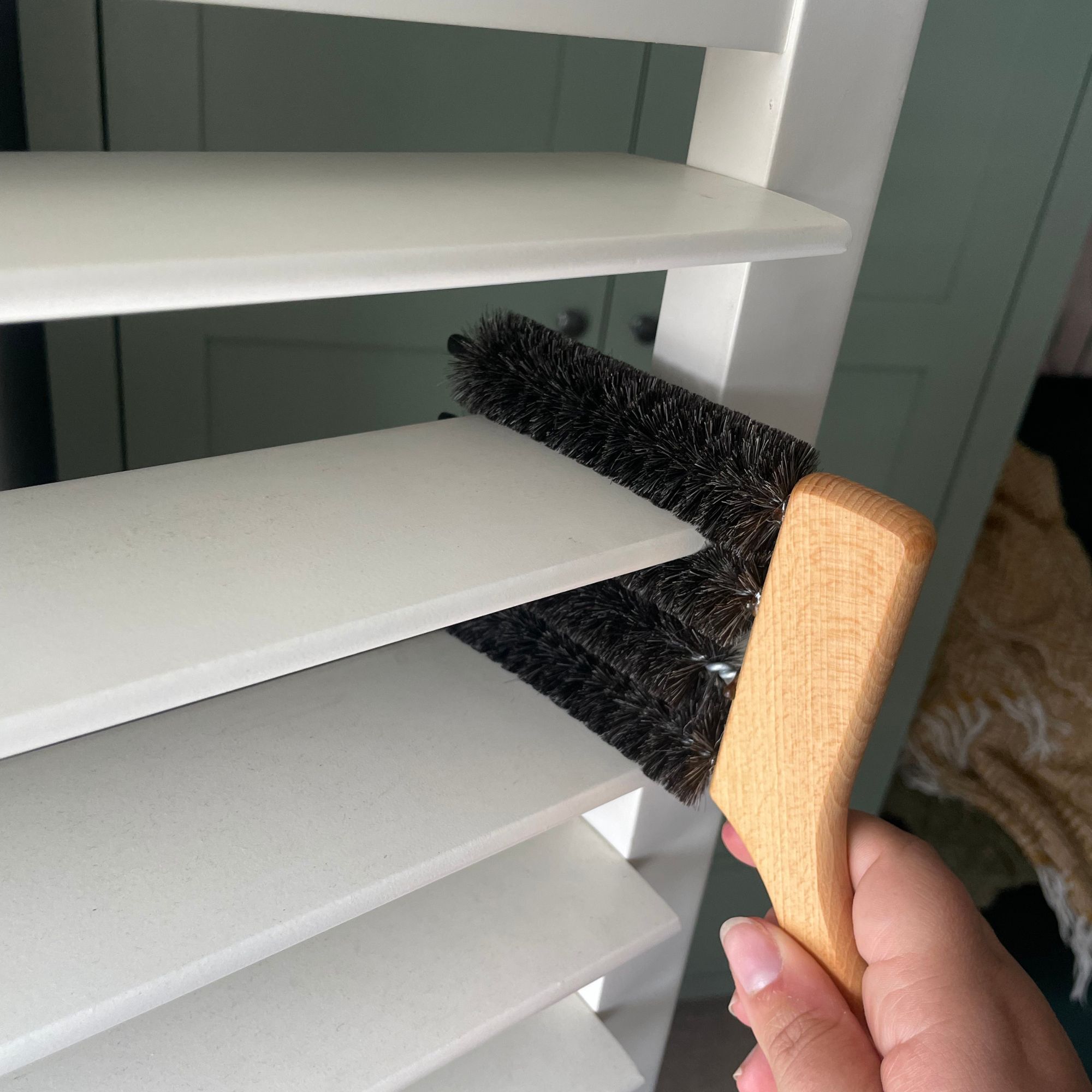
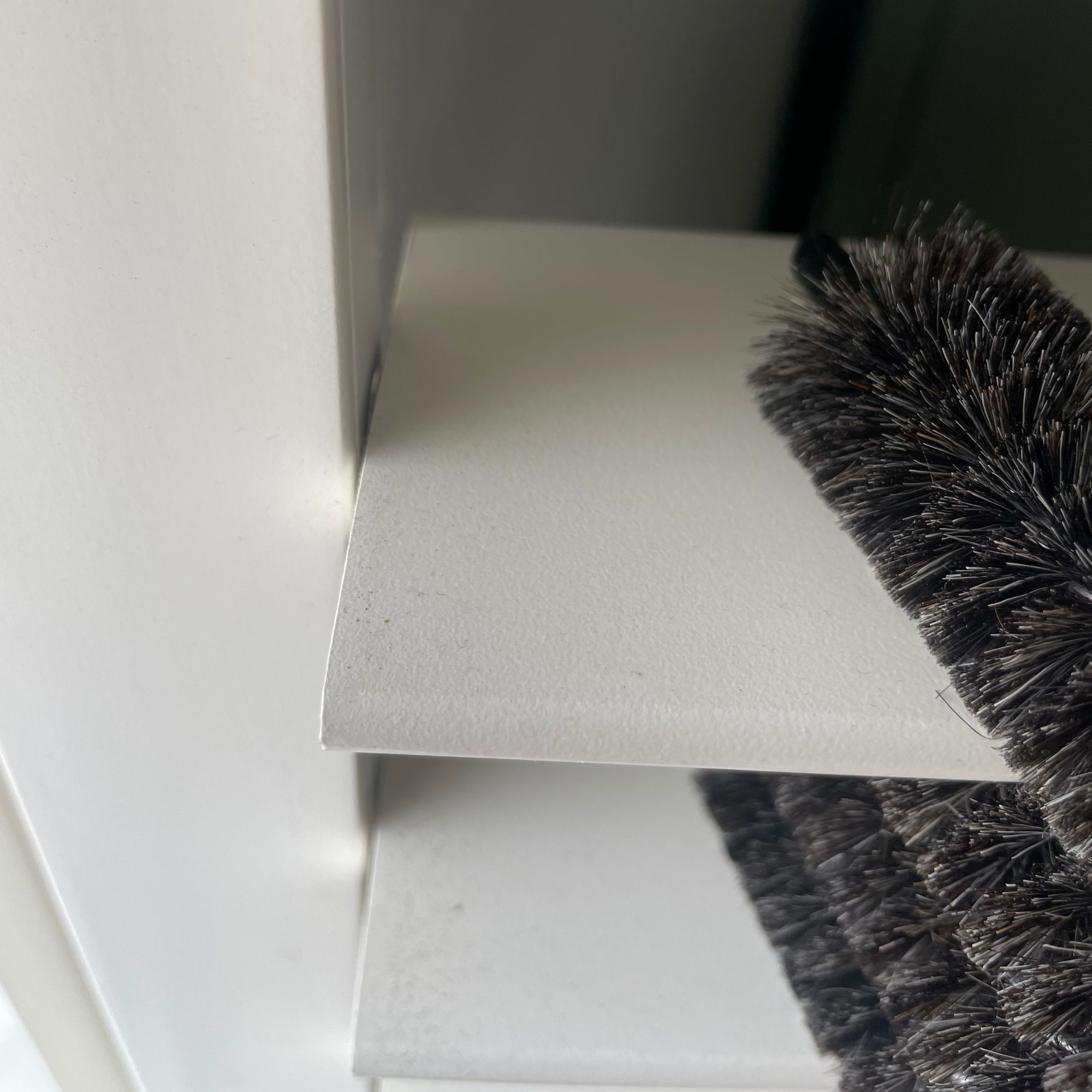
Using this brush certainly seemed like a novelty, and I have to say that I enjoyed using it immensely. The brush slid over the slats as easy as pie, and it took no time at all. For those reasons alone, I would definitely keep it on hand if I wanted a quick cleaning session.
In terms of the actual dusting qualities, though, I wasn’t 100% convinced. Although I think the brushes did pick up some of the dust, I did notice residual dust left at the end of the slat - almost as though it had simply pushed it to the side without removing it completely.
If I was looking for a quick dust - i.e a quick brush over a couple of times a week for light maintenance - this wouldn’t put me off. But if I was looking to give my shutters a deeper clean to get rid of embedded dirt, stains, or thick layers of dust after coming home from holiday, I would probably have to go back over with a regular duster
Alternatively, I would take advantage of the fact that blinds are some of the many things you can clean with a handheld vacuum cleaner around the house, especially when using a soft dusting attachment on it. This could then pick up that last pocket of dust so I was happy with the finished result.
Testing the Scrub Daddy Damp Duster
The last product I tested was the Scrub Daddy Damp Duster, which was a new concept for me. Of course, I’m familiar with the Scrub Daddy brand, but the Damp Duster product was a strange contraption I had never seen before. However, I do know that Ideal Home’s Deputy Digital Editor, Rebecca, swears by using a Scrub Daddy Damp Duster in her home.
Upon first glance, I couldn’t help but be reminded of my favourite childhood treat: the Flump. This thought didn’t go away when I opened up the package and felt the bizarre, rippled sponge in front of me, either. And I have to admit that I almost ruled this product out before I’d even used it because it was so different to the other blind cleaning duster and blind cleaning brush I’d already tested.
But boy, am I glad that I didn’t! The Damp Duster was by far the most effective blind duster of the lot, and the visible signs of dust on the product actually left me feeling pretty embarrassed. But I don’t know why I was too surprised, as I already know that wet dusting is already better than dry dusting as the moisture allows the dust to stick to the product so it can be removed once and for all.
Using the product was incredibly easy, too. All you have to do is hold it under the tap, squeeze out the excess water until it's slightly damp, and wipe across the surface you want to dust.
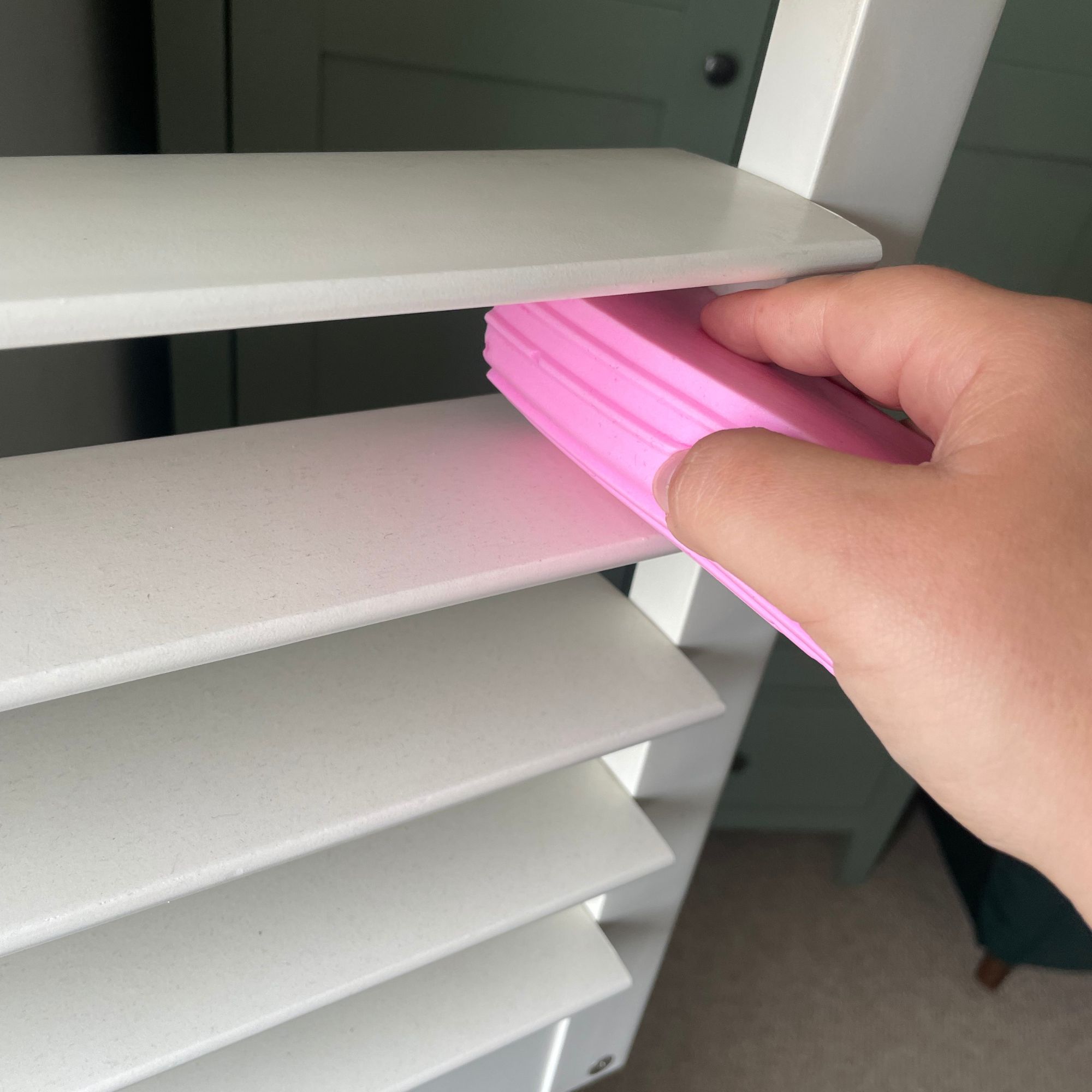
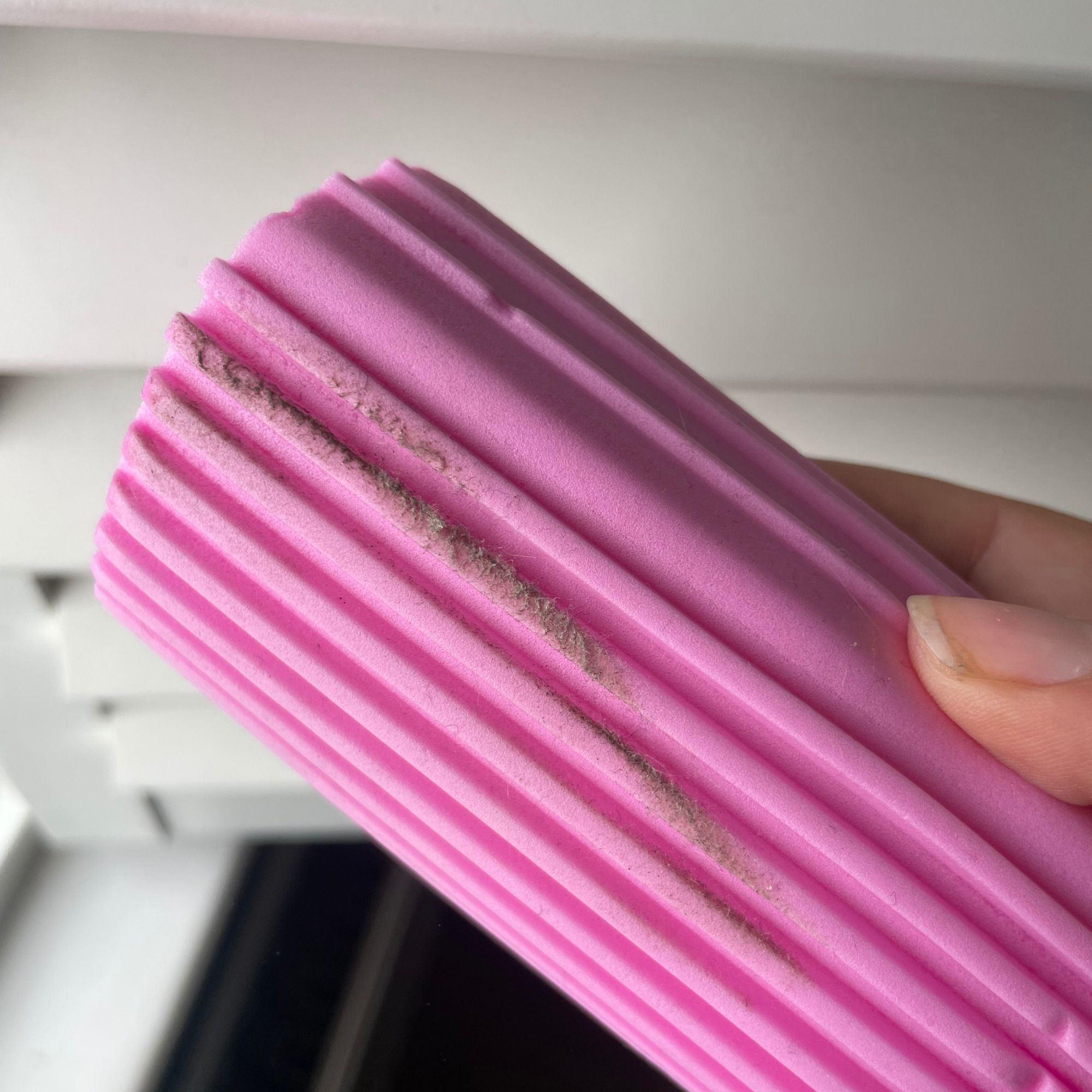
This worked a treat for me, but it’s fair to say that the product is quite large, making me wonder how it would fare as a Venetian blind cleaner as this type of blind not only has smaller slats but also has a smaller gap between the slats. However, the brand also offers a Scrub Daddy Damp Duster Towel on Amazon as an alternative (which looks more like a flat duster but can be used in the same way).
I was so impressed with the Damp Daddy that I then headed downstairs to tackle a random stain that had appeared on one of the dining room blind slats. I had been planning on cleaning it with a microfibre cloth and some Cif from Amazon, but I wondered whether the Damp Duster and some water would do the trick instead - saving me money on one of the best cleaning products in the process.
Amazingly, the damp, rippled nature of the product meant that it came off in seconds. And if you’re looking to spot clean roller blinds, I’d bet anything that it would be perfect for that, too.
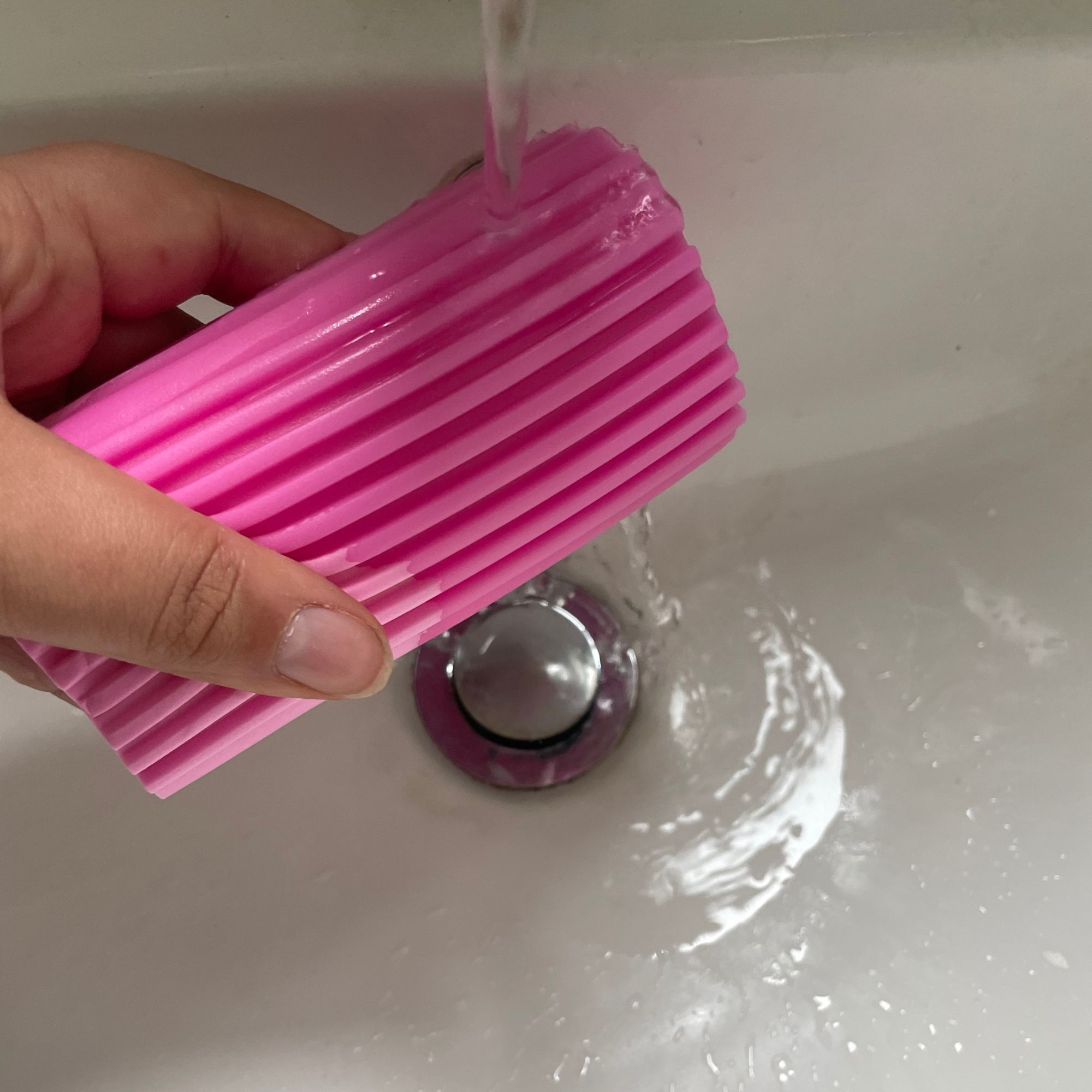
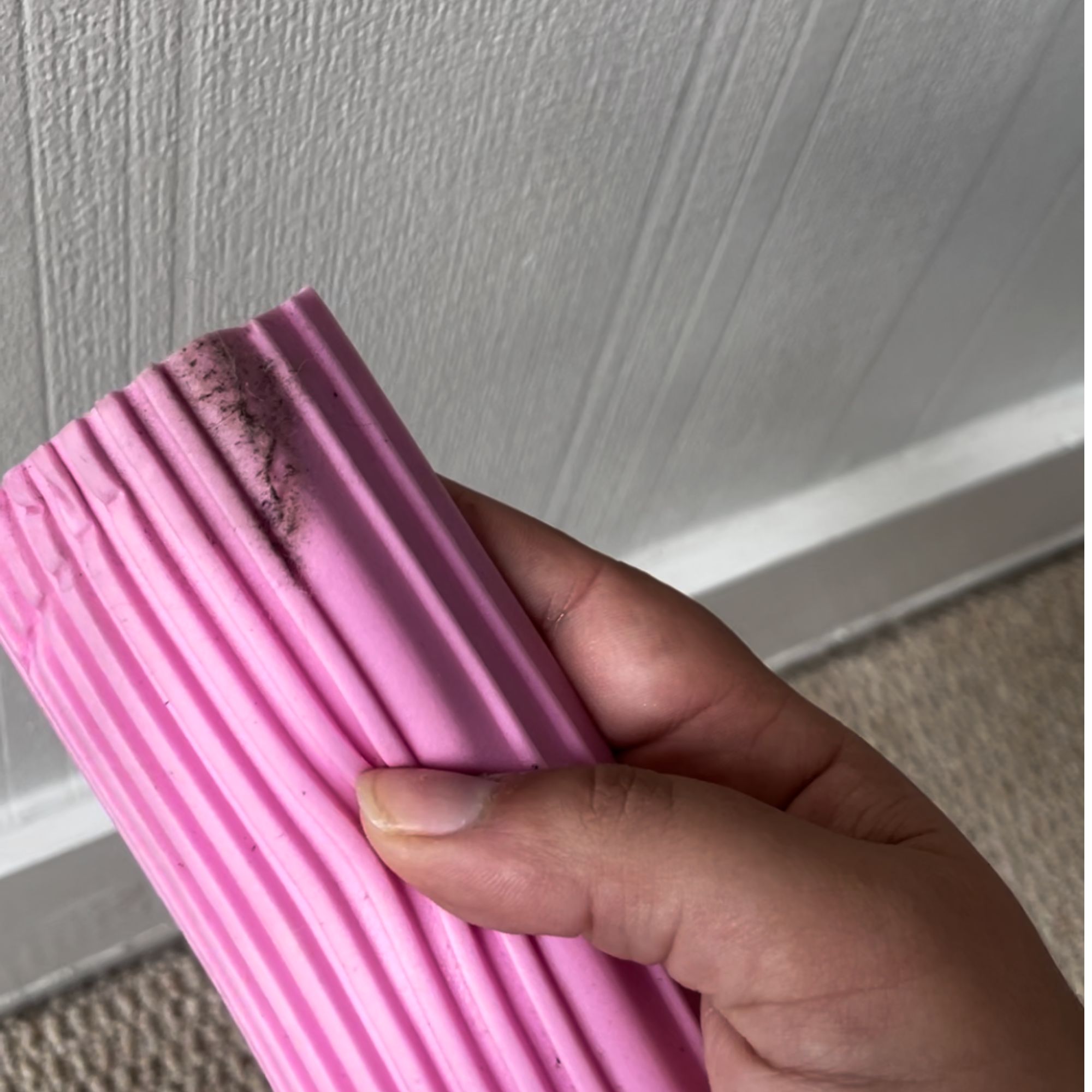
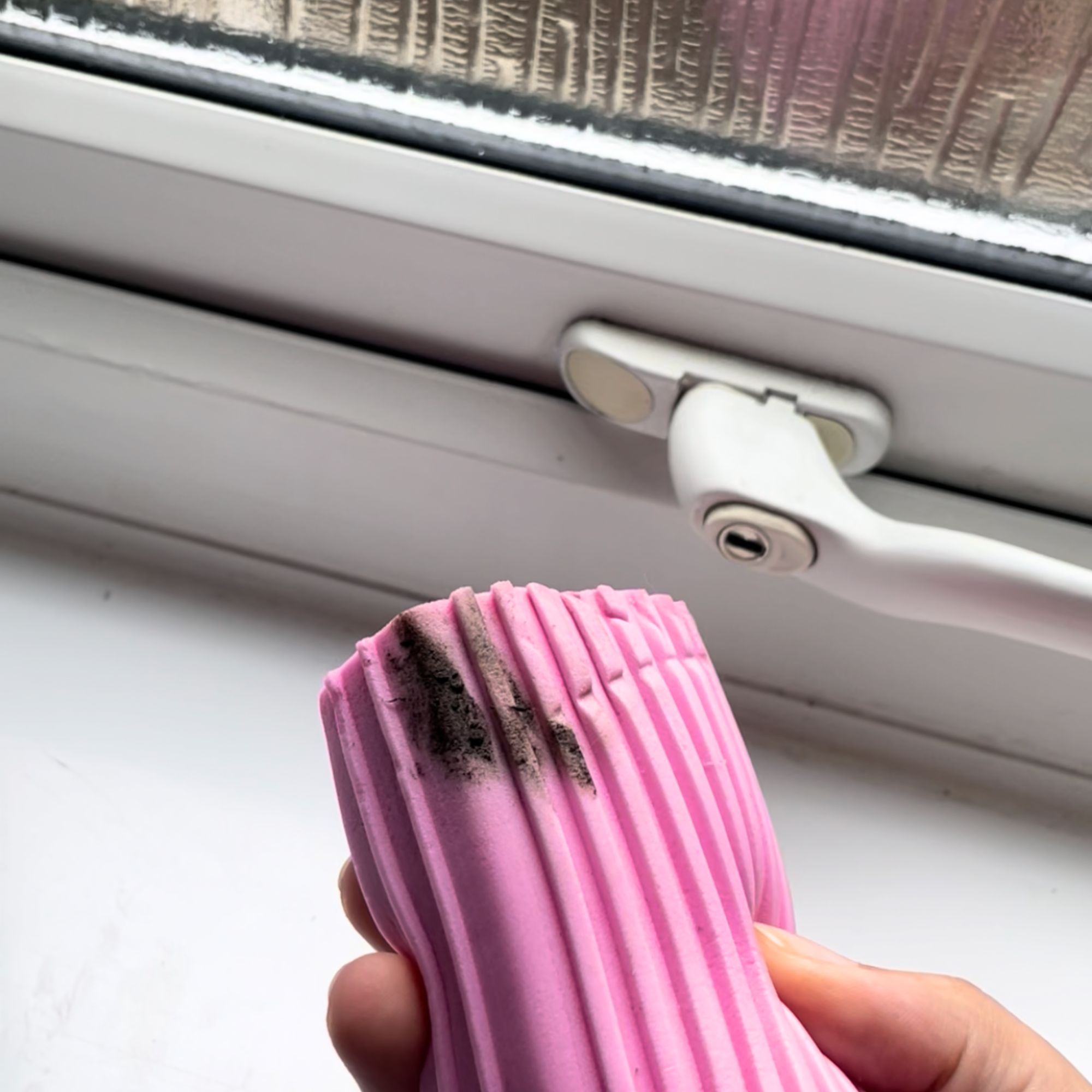
One of the things I both loved and hated about the Scrub Daddy Damp Duster was that I just couldn't stop using it. Despite the shame I felt, something about seeing the dirt and grime on the sponge forced me to carry on cleaning - which is not something I've ever experienced before.
So, I made my way to the bedroom and wiped down the skirting board (which I had dusted with my old duster just a few days earlier), and I was horrified by how much dust and debris was hidden in plain sight. Before using it, it hadn't looked dusty or dirty in the slightest.
And because I obviously wanted to make myself feel even worse, I used the Damp Duster on one last surface: the window seals in my bathroom. I normally give these a wipe-over every week during my ‘big’ housework session, but it turns out that damp windows build up A LOT of grime that’s often hidden amongst the black seals.
Let’s just say that the sight of the Damp Duster was… disgusting.
The final verdict
What this test showed me is that 1) I need to clean my blinds more, 2) sometimes dusting is more about the hidden dust than the visible specks you can see, and 3) damp dusting is the way to go if you want a blind cleaner that will get the job done.
And while I wouldn’t hesitate to use the Minky duster or the Eddingtons blind cleaning brush again, the Scrub Daddy Damp Duster is definitely my winner. Not just for dusting my blinds, either. I would (and will) happily use this to dust and clean my whole house; it’s that good.
Sure, it didn’t exactly knock a huge amount of time off the cleaning task, but I can look past that, considering how satisfying - and embarrassing - it was to see how much hidden dirt and grime it got off my blinds.
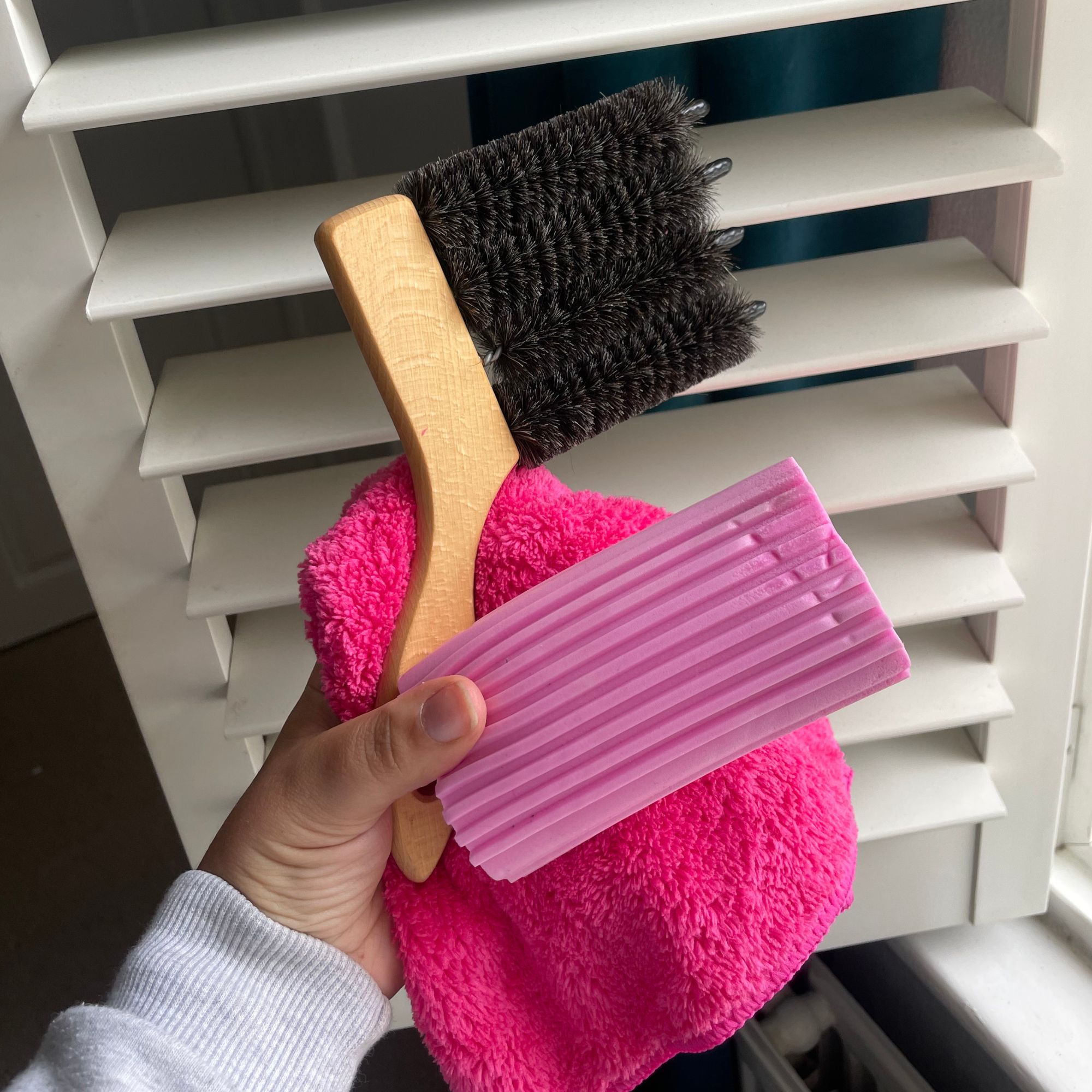
However, it seems as though I’m not the only one who loves the Damp Duster. This product has over 19,000 reviews on Amazon, with an average rating of 4.4 stars out of 5 and customers raving about its cleaning qualities.
This also shows that you don’t need to shell out your hard-earned money on specialist cleaning tools to clean your home, either. Some extremely cheap products can be used across the board for so many different cleaning tasks - and the Damp Duster is ideal for taking your cleaning to the next level.
FAQs
How do professionals clean blinds at home?
In most cases, professionals will use a microfibre cloth to dust blinds at home, and if they wanted to offer a deeper clean to remove grime or stains, they would use a mild solution of washing-up liquid and water or even water and white vinegar.
However, every cleaner will have their own technique, which they may tailor to the specific type of blinds that they’re cleaning.
When I asked Laura Harnett, founder of eco cleaning brand, Seep, how she cleaned her blinds, she explained her nifty hack.
‘The quickest way to clean blinds is to wrap a cloth around each side of kitchen tongs and secure with rubber bands. Hold the tongs so that each cloth-covered arm is on each side of the blind slats. Grip the blinds with the tongs, and move them along the length of each slat to capture dust and debris,’ she says.
She also added, ‘It’s best to do this with a dry cloth, but if there are marks or stubborn debris then spray a little white vinegar onto the cloths and that will lift the grime.’
It’s worth noting that if you have plastic blinds that can be removed, you can also take them down and soak them in warm, soapy water to give them a good clean. You shouldn’t do this with fabric or wooden blinds, however.
Does baking soda clean blinds?
There are so many things you didn’t know you could clean with bicarbonate of soda, and blinds are one of them. This natural alkaline powder can be mixed with water to form a paste and then wiped on blinds to remove stains and even remove odours. However, you need to be careful if you want to use baking soda to clean blinds.
That’s because bicarb can be extremely abrasive, and may scratch plastic and wooden blinds if not done properly (or gently). Because of this, it’s always worth testing an inconspicuous area of the blind before continuing.
So, I’ve found my new blind cleaning tool - but how do you clean yours?







